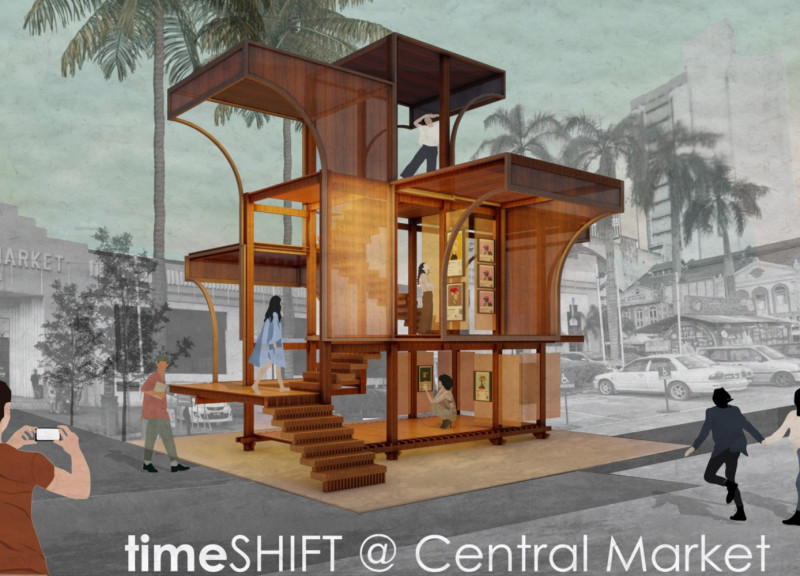5 key facts about this project
The timeSHIFT pavilion at Central Market in Kuala Lumpur aims to connect traditional art with modern artistic practices. Located in a vibrant cultural center, the pavilion provides a space for interaction and exploration, encouraging visitors to appreciate the rich history of Malaysian craftsmanship alongside contemporary art forms. The design concept is rooted in the idea of time, creating a visual and functional link between the past and present.
Site Selection
The pavilion's location takes advantage of its proximity to Central Market. By reclaiming part of the parking lot, the design increases visibility and accessibility for both residents and tourists. This thoughtful positioning invites movement between the busy main street and the market, making the pavilion a focal point for cultural engagement. It encourages foot traffic and enhances the overall atmosphere of the area.
Structural Composition
Timber is a key material in the pavilion's design, reflecting its historical significance in Malaysian architecture. The use of Cross Laminated Timber in the floor beams ensures a strong and durable structure, while Laminated Veneer Lumber supports the curved framing, allowing for creative shapes. These material choices highlight both tradition and modern engineering, emphasizing the relationship between sustainability and craftsmanship.
Interaction and Adaptability
Interactivity is central to the pavilion, with Augmented Wood panels that allow for flexible use of the space. These panels can be adjusted, catering to various activities and events. This adaptability encourages visitors to engage with art in new ways and creates an inviting environment where cultural exchange can thrive. The pavilion adapts to the needs of its users, fostering a sense of community involvement.
Design Detail
The staircases incorporate Dowel Laminated Timber with alternating slits that let light and shadow play across the surfaces. This detail serves as a nod to the traditional art of shadow puppetry, deepening the connection to Malaysian culture. The design blends functionality with aesthetic appeal, offering a memorable experience as visitors move through the space. This attention to detail enhances the overall character of the pavilion, reflecting the artistry it seeks to celebrate.



















































